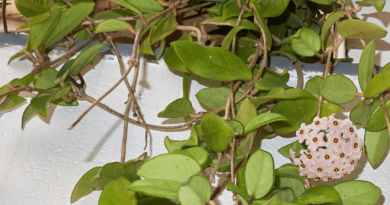Succulent SOS: How to Revive Your Ailing Plants
Succulents are some of the most popular houseplants around and for good reason. They are easy to care for, come in a wide range of shapes and sizes, and are often quite visually striking. However, even the most well-cared-for succulent can sometimes start to look a little worse for wear. Maybe it’s not getting enough water, or maybe it’s not getting enough light. Whatever the cause, ailing succulents can be a source of frustration for even experienced plant owners. But fear not – in this article, we will go over some of the most common reasons succulents start to struggle, and what you can do to revive them.
Signs Your Succulent Needs Help
The first step to reviving your succulent is to identify that it’s struggling in the first place. Some of the most common signs that your succulent needs help include:
- Discoloration: If your succulent’s leaves are turning brown, black, or yellow, it could be a sign of overwatering, underwatering, or too much direct sunlight.
- Drooping: If your succulent’s leaves are starting to droop or wilt, it could be a sign of underwatering or root rot.
- Stunted growth: If your succulent isn’t growing as quickly as it used to, it could be a sign of not getting enough light or nutrients.
- Soft spots: If your succulent leaves are developing soft spots or mushy areas, it could be a sign of overwatering or root rot.
How to Revive Your Succulent
Once you’ve identified that your succulent needs help, it’s time to take action. Here are some steps you can take to revive your ailing succulent:
- Adjust watering: Succulents are desert plants and don’t need a lot of water. If you’ve been overwatering, cut back on watering and give the soil time to dry out before watering again. If you’ve been underwatering, increase the frequency of watering and make sure the soil is thoroughly moistened each time.
- Check for root rot: If you suspect root rot, gently remove your succulent from its pot and inspect the roots. If they are brown and mushy, you’ll need to trim away the affected areas with a clean, sharp pair of scissors or pruning shears. Re-pot your succulent in fresh soil, making sure to remove as much of the old soil as possible.
- Adjust light: If your succulent isn’t getting enough light, move it to a sunnier spot. If it’s getting too much direct sunlight, move it to a shadier spot or provide some shade cloth to filter the light.
- Fertilize: If your succulent isn’t growing as quickly as it used to, it may need a boost of nutrients. Use a fertilizer specifically formulated for succulents and cacti, and follow the instructions carefully.
- Prune: If your succulent has become leggy or misshapen, you may need to prune it back. Use clean, sharp pruning shears and make cuts just above a leaf node.
Preventing Future Problems
Once you’ve revived your succulent, it’s important to take steps to prevent future problems. Here are some tips for keeping your succulent healthy and thriving:
- Don’t overwater: Succulents can go weeks between waterings, so make sure the soil is completely dry before watering again.
- Use well-draining soil: Succulents need soil that drains quickly and doesn’t hold onto moisture for too long.
- Provide adequate light: Most succulents need at least 6 hours of direct sunlight a day. Make sure your succulent is placed in a location where it can receive adequate light.
- Avoid cold temperatures: Succulents prefer warm temperatures and can be damaged by cold temperatures. Keep your succulent in a location where the temperature stays above 10°C (50°F).
- Repot when necessary: As your succulent grows, it may outgrow its pot. When this happens, repot it into a larger pot with fresh soil.
- Keep an eye out for pests: Succulents can be prone to pests such as mealybugs and spider mites. Inspect your plant regularly and treat any infestations promptly.
- Be patient: Succulents are slow-growing plants and can take months to show signs of growth or recovery. Be patient and give your plant the time it needs to recover.
Conclusion
Reviving an ailing succulent can be a challenge, but with the right care and attention, it’s possible to bring it back to health. By identifying the signs that your succulent needs help, adjusting watering and light, fertilizing, pruning, and taking steps to prevent future problems, you can help your succulents thrive. Remember to be patient and don’t give up – with a little TLC, your succulent can continue to bring joy and beauty to your home for years to come.




